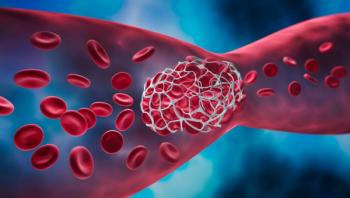
FDA Approves Hemgenix, $3.5 million Gene Therapy for Hemophilia B
Payers are bracing themselves for more ultra-expensive gene therapies.
Ushering in what may become an era of an increasing number of ultra-expensive gene therapies,
An independent review of the drug by the Institute for Clinical and Economic Review (ICER) found that a multimillion dollar price was justified because of its effectiveness of the treatment and substantial savings from people no longer needing infusions of the coagulation factor as often as several times a week. However, ICER cost effectiveness analysis arrived at a price of between $2.93 million and $2.96 million.
A spokesman for
Related:
"We are confident this price point will generate significant cost savings for the overall healthcare system and significantly lower the economic burden of hemophilia B by reducing annual bleed rates, reducing or eliminating prophylactic therapy and generating elevated FIX (factor 9) levels that last for years," said the email.
CSL coined Hemgenix as the brand name of treatment today. It had been previously referred to as Etranadez, but the company is retiring that name and using Hemgenix.
In a
David Rind, M.D., chief medical officer of ICER, said in email today that ICER's recommended price range reflects that nearly all the value of a new therapy for hemophilia involves the the cost of "offsetting extremely overpriced factor replacements."
Rind, explaining some of the calculations in the draft report, also noted that people with Hemgenix may still need coagulation factor infusions as the effects of the gene therapy wanes. The cost of hemophilia treatment will, therefore be more than just the one-time cost of Hemgenix, he said.
Several one-time therapies that replace nonworking genes with working ones have been approved by FDA and are being used, such as Zolgensma, a treatment for spinal muscular atrophy. But patients, insurers and public payers such as Medicaid and Medicare are bracing for more of them and trying to figure out ways how the cost of seven-figure treatments can be shouldered. Value-based contracting with drug companies that adjust payment according to how well the treatment works is one strategy payers hope to use to cope with the high prices.
The fact that many of the diseases are rare helps individual payers manage the outlay because they may have no members — or a very small number — with the condition that is treated with expensive gene therapy.
However, as the number of gene therapies increase, so will the number of members with conditions treated with the ultra-expensive therapies.
About 15% of hemophilia cases are hemophilia B, according to the FDA press release today about Hemgenix approval.
ICER, using data from the Centers for Disease Control and Prevention and other sources, estimated that about a total of about 860 adults in the U.S. would be eligible for treatment with etranacogene dezaparvovec. Assuming that 20% of all the eligible patients are treated per year, 172 patients would be treated each year. At CSL Behring’s list price of $3.5 million, treating that number of patients would cost a total of $602 million per year.
Newsletter
Get the latest industry news, event updates, and more from Managed healthcare Executive.

















































